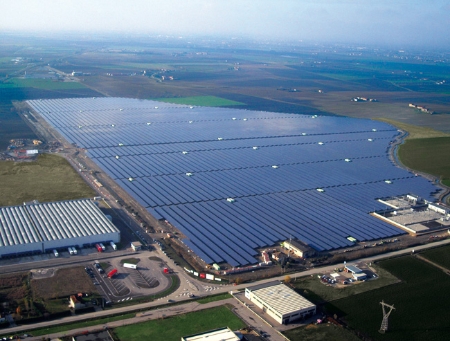Wednesday, November 16, 2011 3:13:48 PM
Jim,
Sorry it took so long to answer this. We have been very busy.
Perhaps the use of the term thin-film is not totally accurate when we talk about our roll-to-roll process that we hope to develop at Kodak. Most thin film processes involve some kind of spray on or some such technology. The problem with most thin-film processes is that they have low efficiencies and don’t last very long. In the case of Natcore’s process, we are growing small carbon nano-tubes and weaving them into a fabric. Our process will be more stable and durable with a life span comparable to poly silicon cells with about the same efficiencies. Dennis believes that we can produce at least a prototype cell in 2012. We think we can manufacture these cells commercially sometime in 2013. (underline by JB)
If you have any questions, give me a call and we can discuss it.
Tom
****************************************************************************************************************************************
From: jb
Sent: Friday, November 11, 2011 8:40 AM
To: Tom Scarpa
Subject: FW: Co-founder of Natcore recognized by science community for his solar work
GM Tom,
I am trying to figure out if the article below was referring to flexible thin-film roll-to-roll when it stated thin-film.
From the latest article:
Quote:
--------------------------------------------------------------------------------
The killer app for Barron’s technology has proven to be ultra-high-efficiency thin-film solar cells at lower costs. Natcore is preparing to mass produce 14 percent efficient thin-film in 2012.
--------------------------------------------------------------------------------
Thin-film solar in Wikipedia:
Initially appearing as small strips powering hand-held calculators, thin-film PV is now available in very large modules used in sophisticated building-integrated installations and vehicle charging systems. GBI Research projects thin film production to grow 24% from 2009 levels and to reach 22,214 MW in 2020. "Expectations are that in the long-term, thin-film solar PV technology would surpass dominating conventional solar PV technology, thus enabling the long sought-after grid parity objective."
A silicon thin-film cell uses amorphous (a-Si or a-Si:H), protocrystalline, nanocrystalline (nc-Si or nc-Si:H) or black silicon. Thin-film silicon is opposed to wafer (or bulk) silicon (monocrystalline or polycrystalline).
Natcore has always referred to their flexible roll-to-roll product as thin-film. However, the link in the latest article doesn't refer to the flexible product.
I'd really appreciate it if you would clerify this for me.
Thanks,
Jim
--------------------------------------------------------------------------------
From: jb
To: scarpa@natcoresolar.com
Subject: Co-founder of Natcore recognized by science community for his solar work
Date: Thu, 10 Nov 2011 14:53:43 -0600
Hi Tom,
Have you seen this article yet?
The killer app for Barron’s technology has proven to be ultra-high-efficiency thin-film solar cells at lower costs. Natcore is preparing to mass produce 14 percent efficient thin-film in 2012.
http://www.cleanenergyauthority.com/solar-energy-news/cofounder-of-natcore-recognized-by-science-community-111011/
Wow!!!
Is mass produce in 2012 really the plan?
Thanks in advance,
Jim
North Bay Resources Announces Assays up to 5 oz/ton Gold, 1.5 oz/ton Platinum, 0.5 oz/ton Palladium, and 0.5 oz/ton Rhodium at Mt. Vernon Gold Mine, Sierra County, California • NBRI • Oct 4, 2024 9:15 AM
Basanite, Inc. Appoints Ali Manav as Interim Chief Executive Officer • BASA • Oct 3, 2024 9:15 AM
Integrated Ventures Announces Launch of MedWell Facilities, LLC and Lease Agreement with Giant Fitness Clubs • INTV • Oct 3, 2024 8:45 AM
Beyond the Horizon: Innovative Drug Combinations Offer New Hope for Alzheimer's and More • NVS • Oct 3, 2024 8:45 AM
SMX and FinGo Enter Into Collaboration Mandate to Develop a Joint 'Physical to Digital' Platform Service To Enhance Natural Rubber Industry's Ability to Report on Sustainable and Ethical Supply Chains • SMX • Oct 3, 2024 7:00 AM
Transforming Alzheimer's Treatment: Innovative Combinations to Boost Cognition • PFE • Oct 2, 2024 9:00 AM







